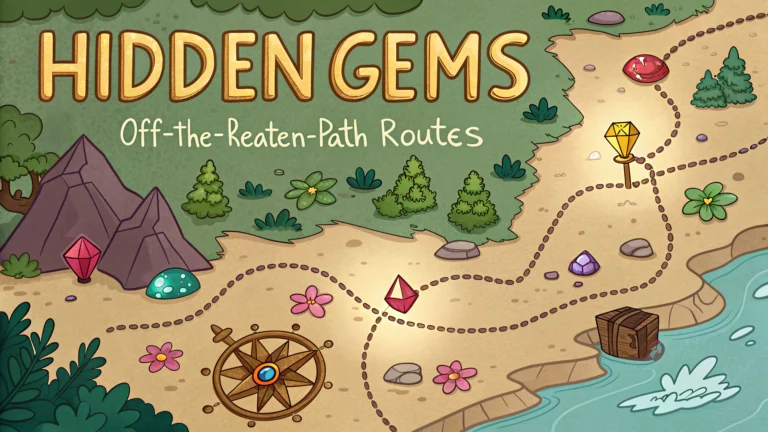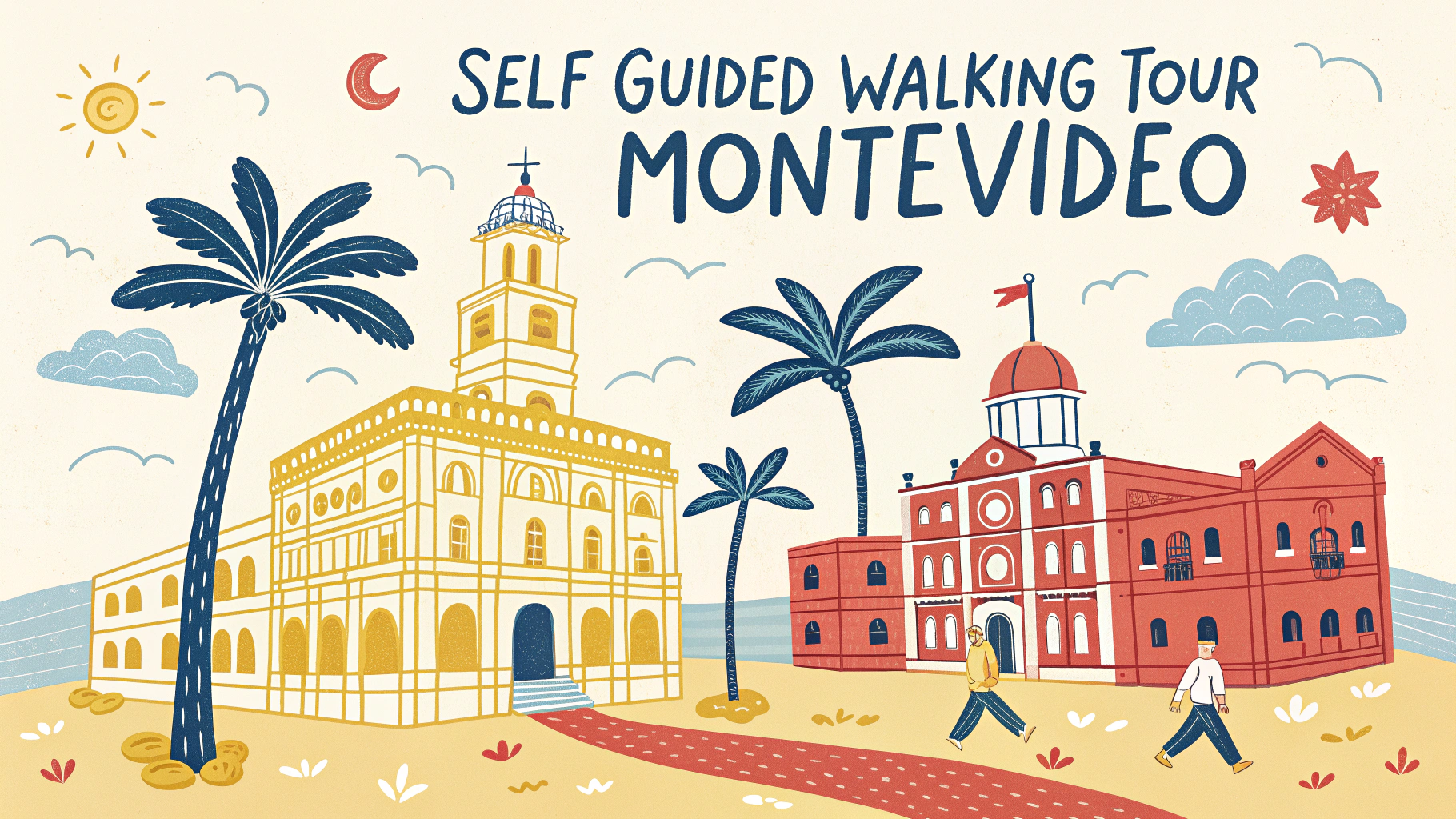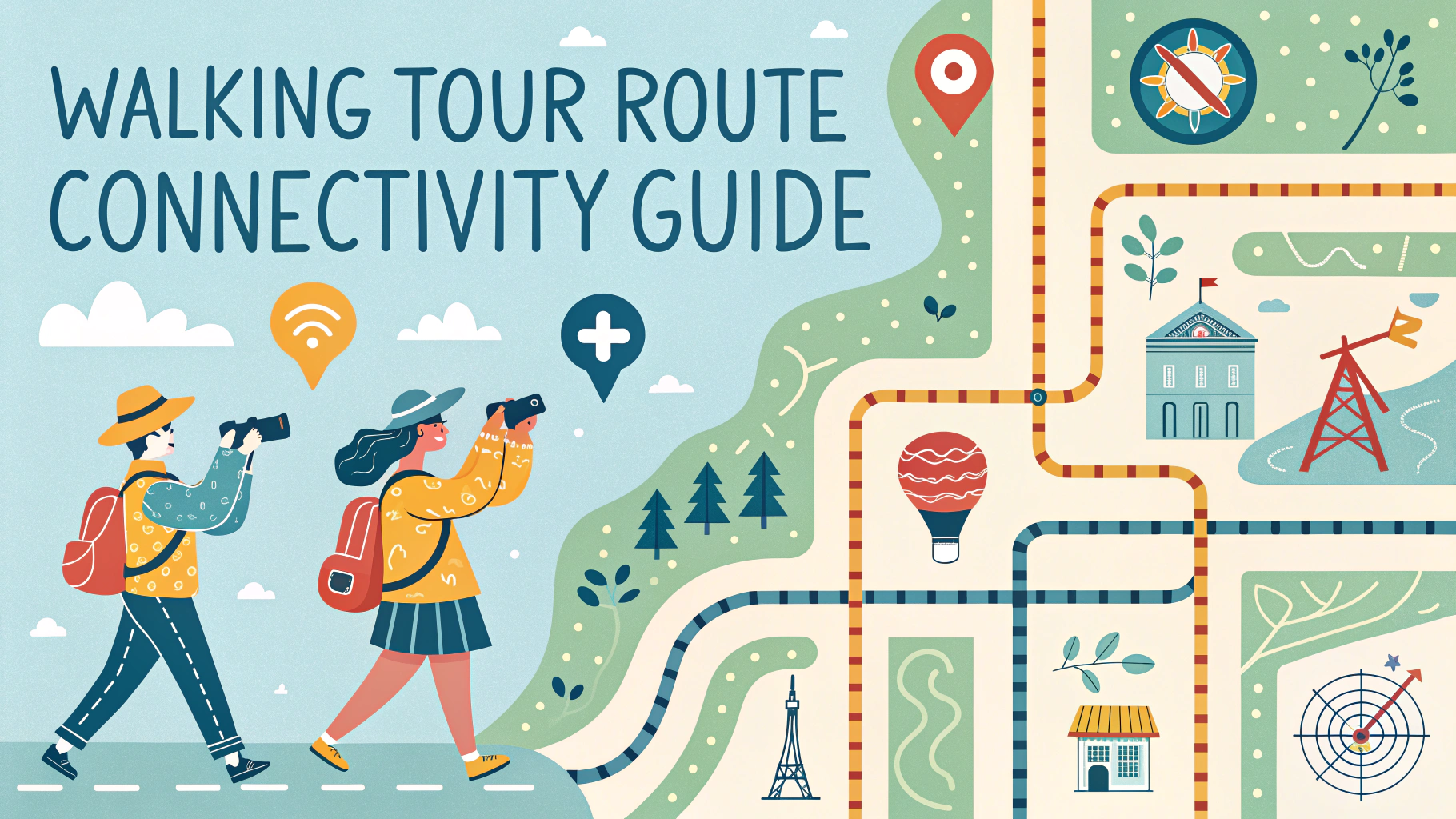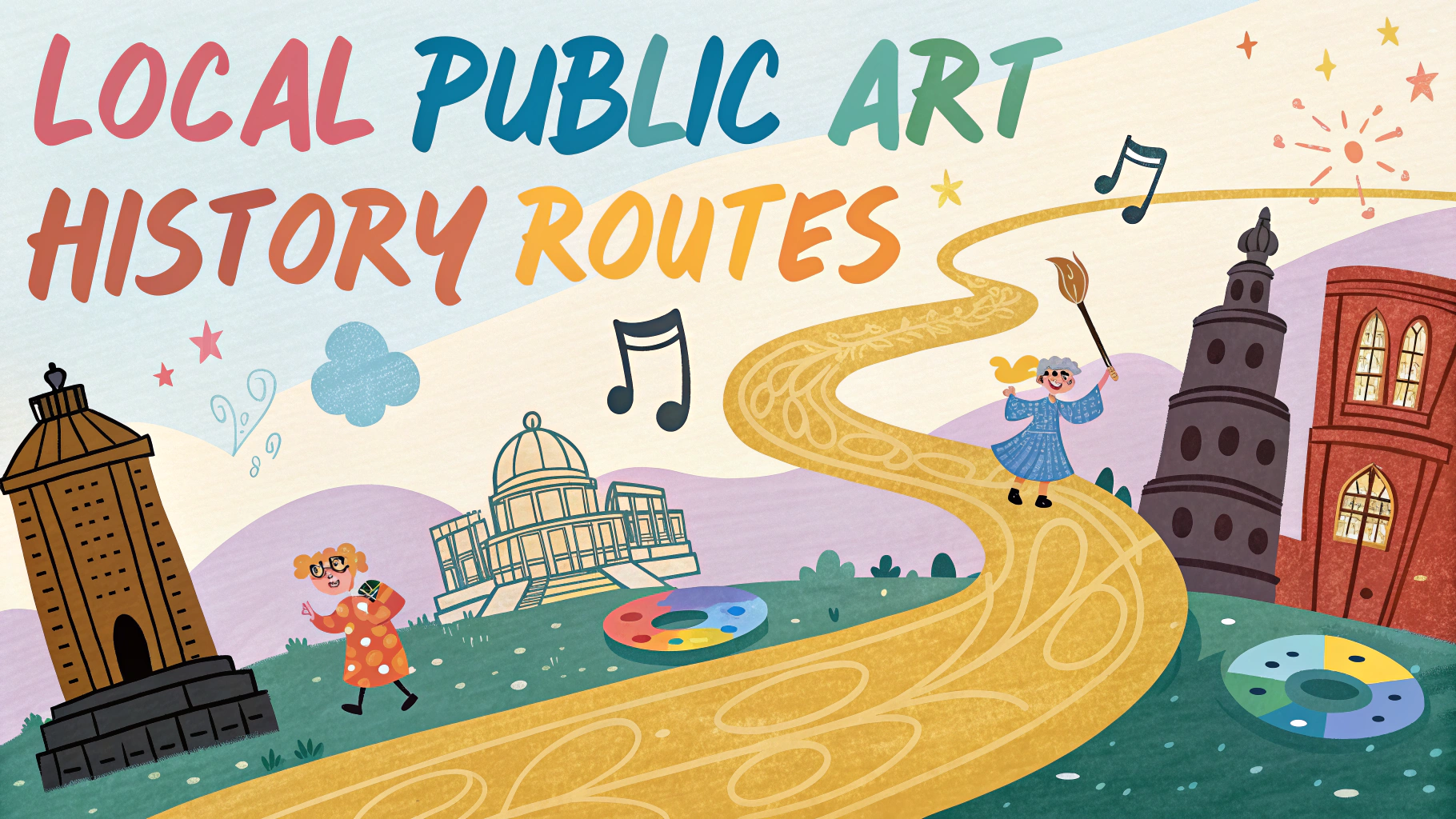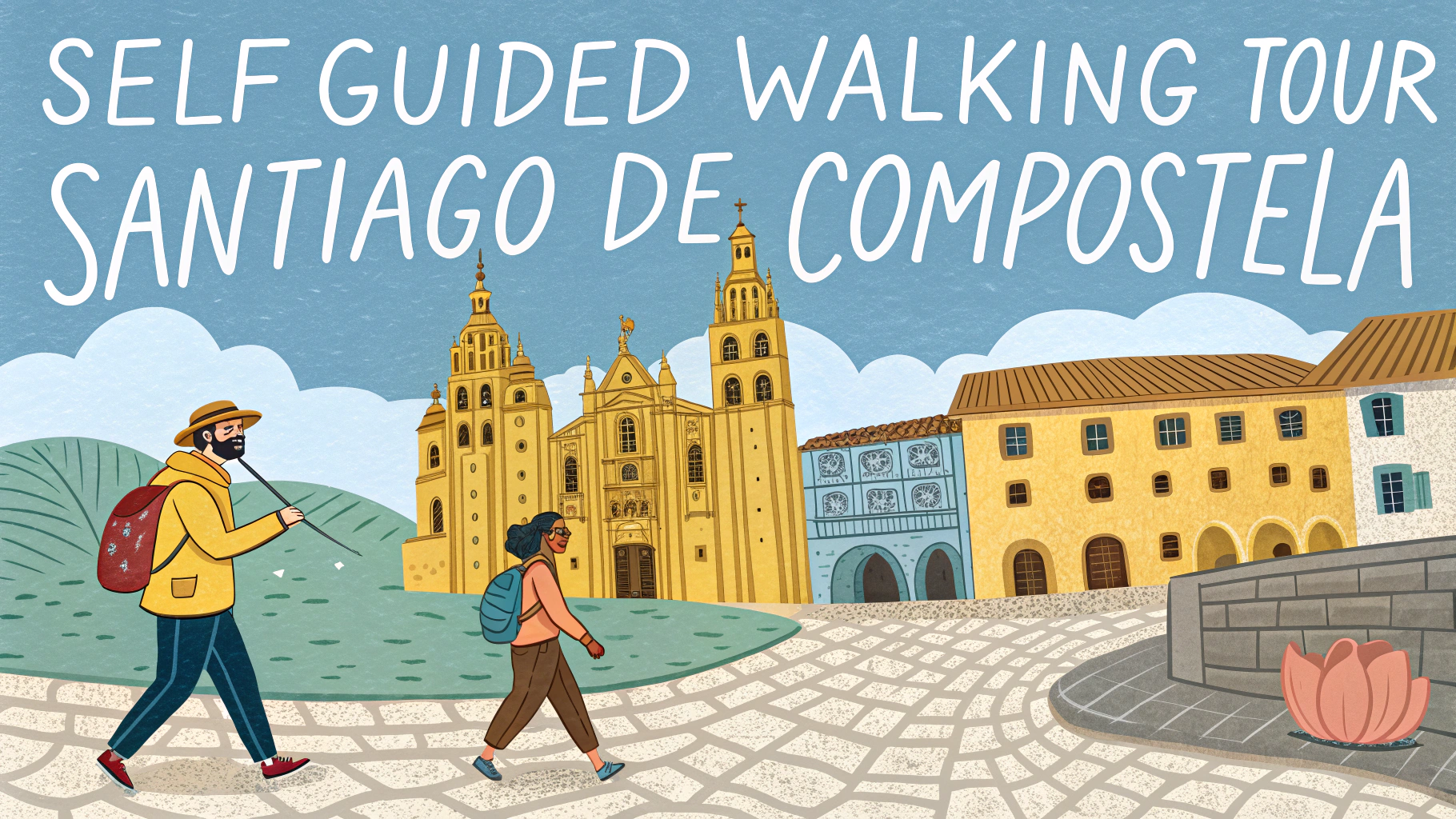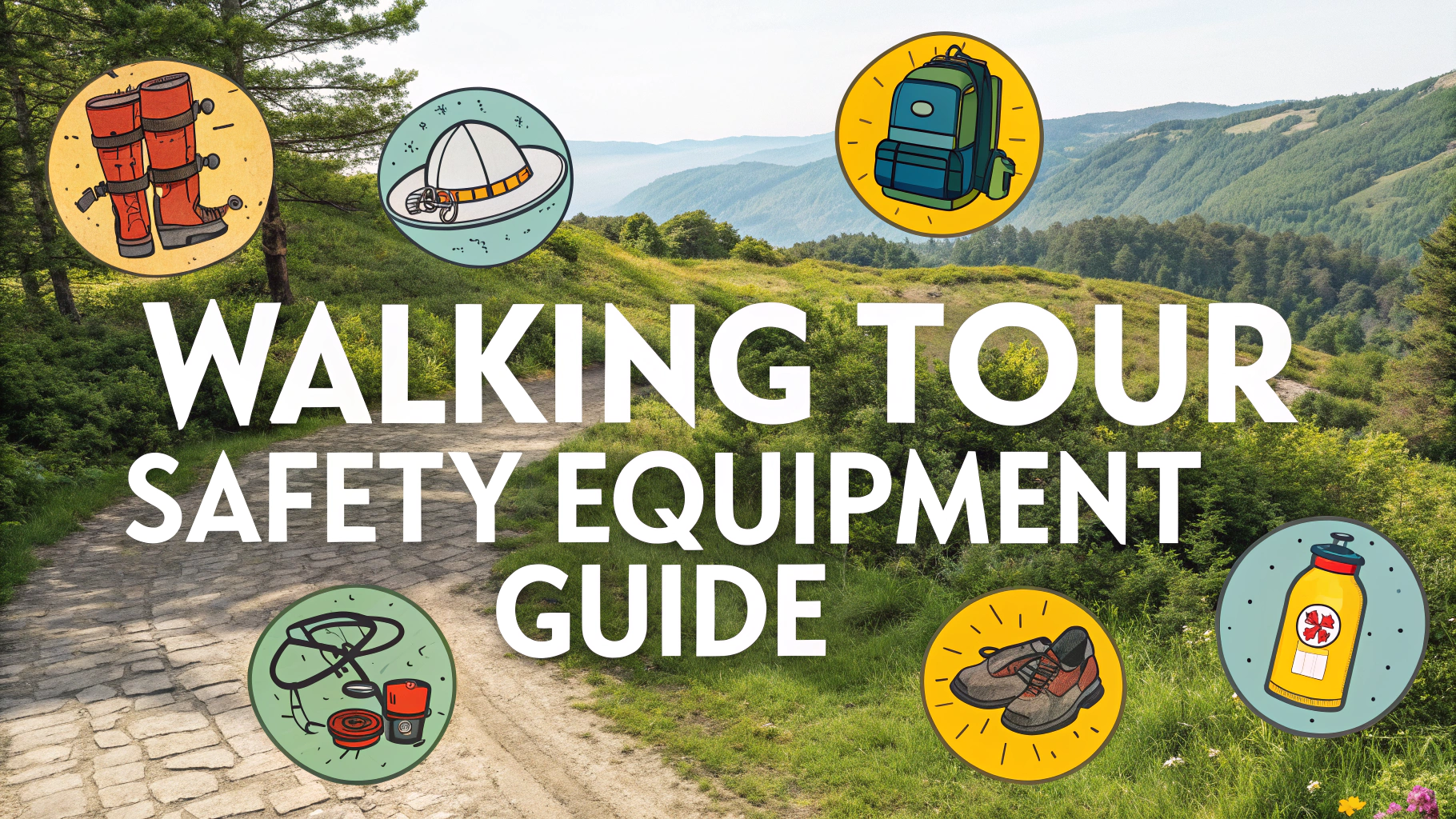Finding off-the-beaten-path routes can transform an ordinary walk into an unforgettable adventure.
Best Tools for Finding Hidden Routes
- AllTrails Pro ($29.99/year) – Shows user-created trails and offline maps
- Komoot (Free basic version) – Specializes in local hiking paths
- OpenStreetMap (Free) – Community-maintained maps showing lesser-known paths
Tips for Discovering Secret Local Paths
- Check historical maps at local libraries for old walking routes
- Join local hiking groups on Facebook or Meetup
- Talk to residents at local cafes and shops
- Visit tourist information centers for insider knowledge
Safety Considerations
Always share your planned route with someone before exploring hidden paths.
Download offline maps as cell service might be limited on lesser-known routes.
Pack emergency supplies including a basic first aid kit and extra water.
Photography Spots on Hidden Routes
- Abandoned buildings (check local regulations first)
- Hidden waterfalls
- Local street art
- Historic landmarks off main tourist paths
Hidden Urban Routes Worth Exploring
| City | Route | Special Features |
|---|---|---|
| London | Seven Noses of Soho | Hidden nose sculptures on buildings |
| Paris | La Petite Ceinture | Abandoned railway line turned walking path |
| New York | Elevated Acre | Secret garden above Financial District |
Local Food Stops
Research family-owned restaurants along your chosen route before starting.
Ask locals about hidden food markets and street vendors.
Best Times to Explore
- Early Morning – Fewer people, better photos
- Off-Season – More authentic local experience
- Weekdays – Less crowded, easier parking
Check weather forecasts and sunrise/sunset times before planning your walk.
Essential Items for Hidden Path Exploration
- Portable phone charger
- Water bottle and snacks
- Good walking shoes
- Small flashlight
- Local paper map as backup
Take photos of route markers or distinctive features to help navigate back.
Record your favorite discoveries in a travel journal for future reference.
Resources for More Information
- Atlas Obscura – Database of unique places
- Meetup – Local walking groups
- Local tourism board websites
- Historical society archives
Environmental Impact
Follow “Leave No Trace” principles when exploring hidden paths to preserve their natural state.
- Pack out all trash
- Stay on marked trails
- Respect wildlife habitats
- Avoid picking plants or flowers
Cultural Considerations
Research local customs and regulations before exploring residential areas.
- Respect private property boundaries
- Keep noise levels down in residential zones
- Ask permission before photographing people
- Learn basic local phrases if abroad
Hidden Seasonal Routes
| Season | Best Hidden Paths | Special Features |
|---|---|---|
| Spring | Woodland Trails | Wildflowers and bird watching |
| Summer | Mountain Paths | Hidden lakes and viewpoints |
| Autumn | Forest Routes | Fall foliage and mushroom spots |
| Winter | Urban Passages | Holiday decorations and covered walkways |
Documentation Tips
- Create custom Google Maps with discovered locations
- Share findings with local hiking communities
- Document seasonal changes along routes
- Note accessibility challenges for future reference
Conclusion
Exploring hidden paths offers unique perspectives on familiar places and creates memorable adventures. With proper preparation, respect for local environments, and a spirit of discovery, these lesser-known routes can reveal the authentic character of any location.
Remember to balance the excitement of discovery with safety considerations and environmental responsibility. Share your findings responsibly to help preserve these special places for future explorers.
FAQs
- What exactly are hidden gem walking routes and how do they differ from regular tourist paths?
Hidden gem routes are lesser-known walking paths that avoid crowded tourist spots, offering authentic local experiences, unique viewpoints, and cultural encounters that most visitors miss. These routes typically explore residential neighborhoods, local markets, historic alleyways, and natural areas not featured in mainstream guidebooks. - How do I find reliable hidden gem walking routes in a new city?
You can discover hidden routes through local hiking apps, community forums, municipal websites, local hiking groups’ social media, historical society resources, and specialized walking tour websites. Many cities also have urban walking guides published by local authors. - What safety precautions should I take when exploring off-the-beaten-path routes?
Always share your route with someone, carry a fully charged phone, download offline maps, bring water and basic first aid supplies, research the area’s safety beforehand, walk during daylight hours, and stay aware of your surroundings. - What essential items should I pack for a self-guided hidden gem walk?
Carry a detailed map or GPS device, comfortable walking shoes, weather-appropriate clothing, water, snacks, a phone camera, portable charger, small first aid kit, and local emergency contact numbers. - How long do hidden gem walking routes typically take to complete?
Most urban hidden gem routes range from 1-4 hours, covering 2-6 miles. However, durations vary significantly based on walking pace, number of stops, photo opportunities, and route difficulty. - Are hidden gem routes suitable for all fitness levels?
While many hidden gem routes are moderately easy, some may involve stairs, hills, or uneven terrain. Research route difficulty ratings and elevation changes beforehand to match your fitness level and mobility needs. - What’s the best time of day to explore hidden gem routes?
Early morning to mid-morning is ideal for photography, avoiding crowds, and comfortable walking temperatures. Some routes may be particularly scenic during golden hour (just after sunrise or before sunset). - How can I ensure I don’t get lost while following a self-guided route?
Download offline maps, use GPS tracking apps, take screenshots of route directions, note major landmarks, and carry a physical map. Many routes now have downloadable GPX files for precise navigation. - Are permits required for exploring hidden gem walking routes?
Most urban walking routes don’t require permits, but some paths through nature reserves, historical sites, or private property might need prior permission or entrance fees. Always check local regulations before starting. - How can I enhance my hidden gem walking experience?
Research the area’s history beforehand, learn basic local phrases, carry a camera, take detailed notes, engage with local businesses along the route, and consider using audio guides or historical apps that provide context about the areas you’re exploring.
